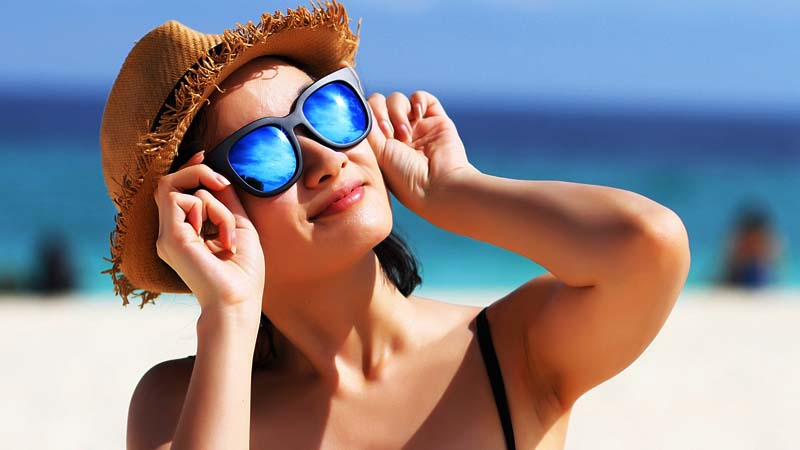Summer Sun Protection and Sunburn Care

This summer, you’re going to need some sun protection. You’re being exposed to damaging UVA and UVB rays (there’s more on this later) and you’re at greater risk of developing skin cancer or experiencing premature ageing, including wrinkles, dark spots and fine lines. So to avoid all this, slap on some sunscreen before you head out the door, ideally every day.
This guide to sunscreen will help you to understand what you need to know and, more importantly, what specs to look out for when you buy, and what to avoid.
Read More: Devastating wildfires led to record-high emissions this summer
UVA and UVB rays
UV rays are what cause the damage and are the ones you need to protect your skin from, with both types being linked to skin cancer. Ultraviolet B (UVB) rays are responsible for skin reddening and sunburn. It’s also the main culprit for skin cancer but also causes tanning and premature ageing.
Ultraviolet A (UVA) rays penetrate deeper into your skin and are responsible for tanning. They also cause premature aging such as wrinkles. When buying sunscreen you want to look out for a broad spectrum version, which protects you against both types of UV rays.
What does SPF mean?
Sun protection factor (SPF) measures the amount of protection you’ll receive from the sun’s UVB rays. Rated on a scale from 2 to 50+ (the higher the number, the stronger the protection), it tells you how much longer your skin will take to turn red in response to UVB compared to if you weren’t using any protection.
How good is your sunscreen?
Sunscreens are rated for their level of UVA protection. When you see “UVA” inside a circle, it’s confirming the UVA protection you’ve bought is at least one third of the SPF value.
Some products may display a star rating instead, which is also a measure of the amount of protection you receive from UVA radiation. The rating is from one to five stars, where more stars mean more protection. This system requires a higher minimum level of protection than the EU recommendations.
Different types of sunscreen
Once-a-day sunscreen: These claim to protect you from the sun all day with only one application. Tests completed on these sunscreens have shown otherwise though, so we recommend you stick to the normal guidelines when it comes to application.
Water-resistant sunscreen: These are for those who are always in the pool or sea, as it means your sunscreen will keep you protected in the water.
Facial sunscreen: These creams are often moisturizers containing SPF, so are usually lightweight, non-greasy, and great for delicate or sensitive skin. Make sure you apply them liberally to your face and reapply every two hours in the sun.
Anti-aging sunscreen: Most now claim to contain anti-aging properties or protection from free radicals. Free radicals are created from environmental factors such as pollution and dust and contribute to premature ageing. City dwellers should look out for this type as you’ll need daily protection from the surrounding smog.
How much sunscreen should you apply and how often?
It’s a pain to apply and reapply sunscreen but it’s vital if you’re planning on sitting out in the sun. A good rule to follow is one teaspoon per body part that’s exposed to the sun.
Always apply sunscreen 30 minutes before you’re out in the sun and top up just before. Once in the sun reapply every couple of hours or immediately if you’ve been swimming or sweating – even if your sun cream claims to be water-resistant.
Sunscreen for babies and kids
Children under six months old should be kept out of direct, strong sunlight altogether by staying in the shade and using a hat and long-sleeved clothing to help keep skin covered.
If your little ones are older than six months, make sure they cover up with suitable clothing, stay out of the sun from 11am to 3pm and wear SPF 30 or higher on exposed skin such as the face, shoulders and neck. There are a whole range of sunscreens for kids for you to consider.
Read More: ‘Crab farming can protect Sundarbans environment’
Sunscreen shelf life
Most bottles last 12 to 18 months but if they’ve been exposed to a high temperatures or direct sunlight, this will be reduced.



